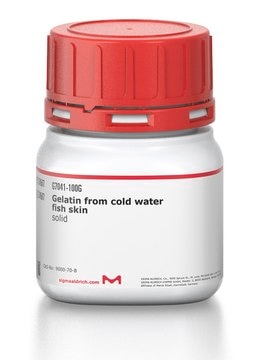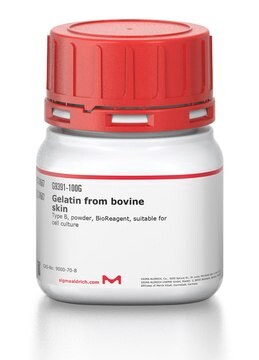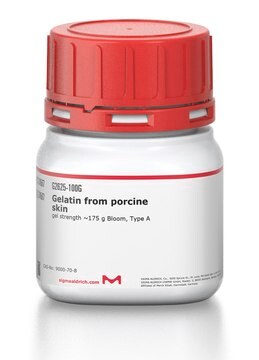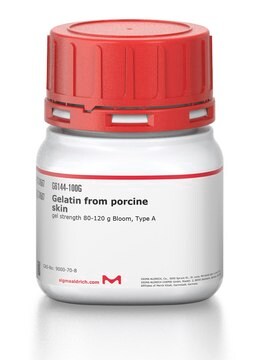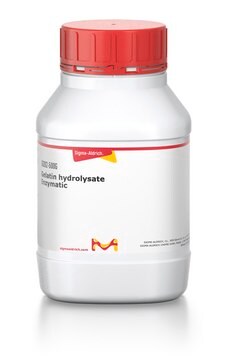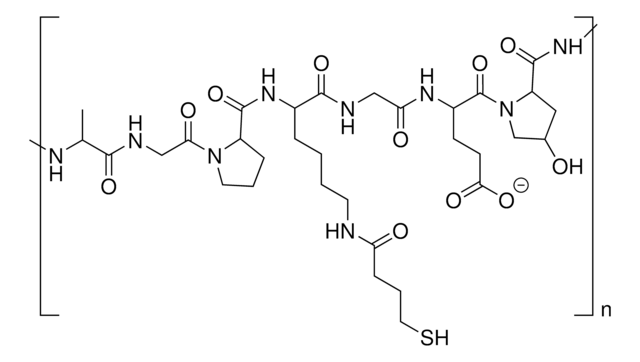V900863
Porcine Gelatin
from porcine skin, Type A, powder, gel strength ~300 g Bloom, Vetec™
About This Item
Recommended Products
product name
Gelatin from porcine skin, Vetec™, reagent grade, Type A, powder, gel strength ~300 g Bloom
biological source
Porcine skin
grade
reagent grade
type
Type A
product line
Vetec™
form
powder
packaging
poly bottle of 100 g
poly bottle of 500 g
solubility
H2O: soluble 50 mg/mL, clear to hazy, faintly yellow to yellow
Looking for similar products? Visit Product Comparison Guide
General description
Components
Legal Information
Storage Class Code
11 - Combustible Solids
WGK
nwg
Flash Point(F)
Not applicable
Flash Point(C)
Not applicable
Certificates of Analysis (COA)
Search for Certificates of Analysis (COA) by entering the products Lot/Batch Number. Lot and Batch Numbers can be found on a product’s label following the words ‘Lot’ or ‘Batch’.
Already Own This Product?
Find documentation for the products that you have recently purchased in the Document Library.
Customers Also Viewed
Our team of scientists has experience in all areas of research including Life Science, Material Science, Chemical Synthesis, Chromatography, Analytical and many others.
Contact Technical Service



